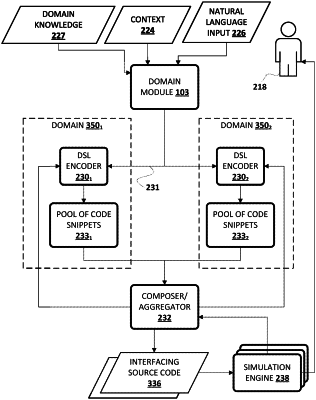| CPC G06F 8/35 (2013.01) [G06F 9/54 (2013.01)] | 20 Claims |

|
1. A method implemented using one or more processors, comprising:
processing a natural language input to generate an interface request semantic embedding, wherein the natural language input requests generation of interfacing source code to logically couple a first computing component associated with a first domain with a second computing component associated with a second domain;
processing the interface request semantic embedding using one or more transformer networks to generate, for inclusion in a first pool, candidate code snippets for logically coupling with the first computing component, wherein one or more of the transformer networks are trained based on a first corpus of source code associated with the first domain;
processing the interface request semantic embedding using one or more of the transformer networks to generate, for inclusion in a second pool, candidate code snippets for logically coupling with the second computing component, wherein one or more of the transformer networks are trained based on a second corpus of source code associated with the second domain;
generating a plurality of candidate instances of interfacing source code between the first and second computing components, wherein each candidate software interface comprises a different permutation of candidate code snippets from the first and second pools of candidate code snippets; and
causing output to be rendered by a computing device, wherein the output conveys one or more of the candidate instances of interfacing source code to a user.
|